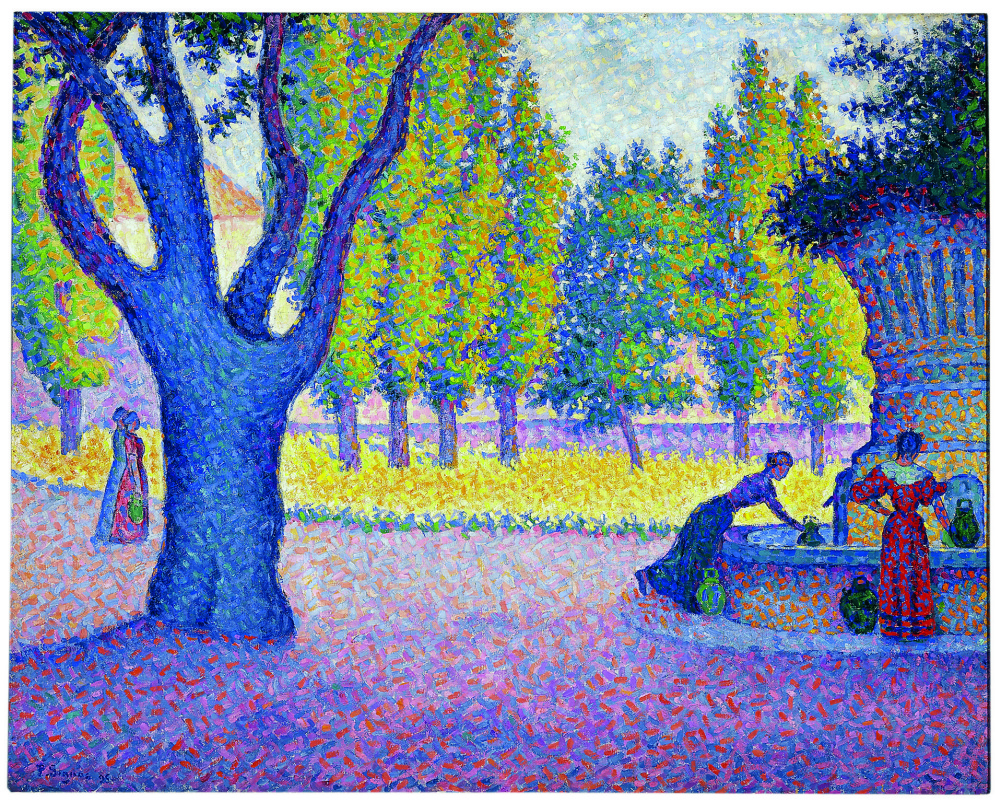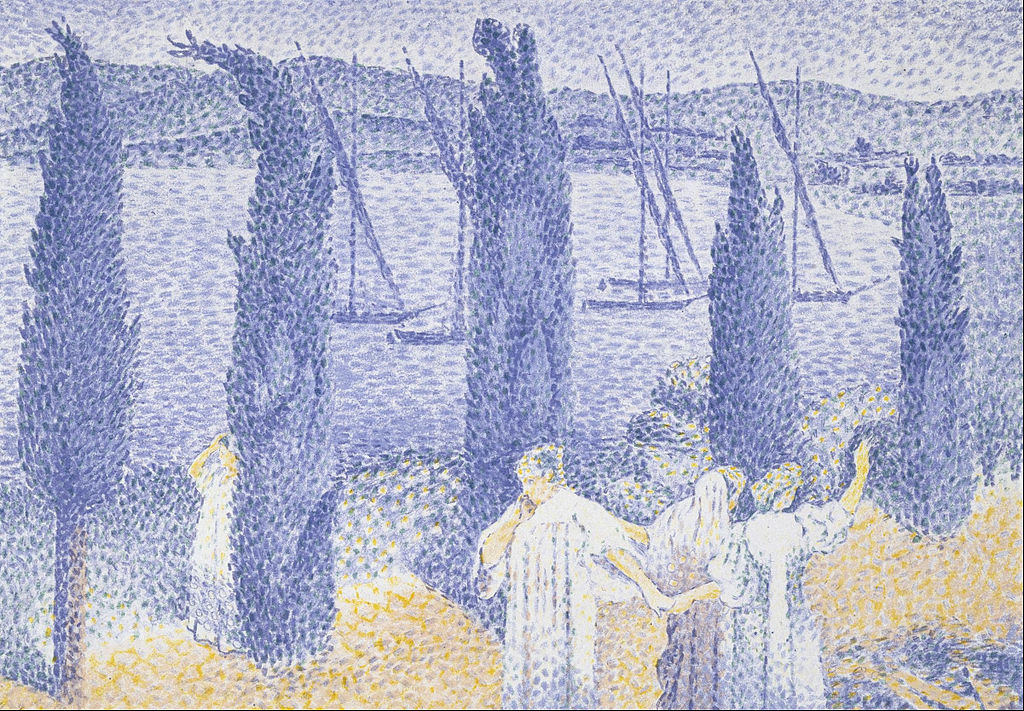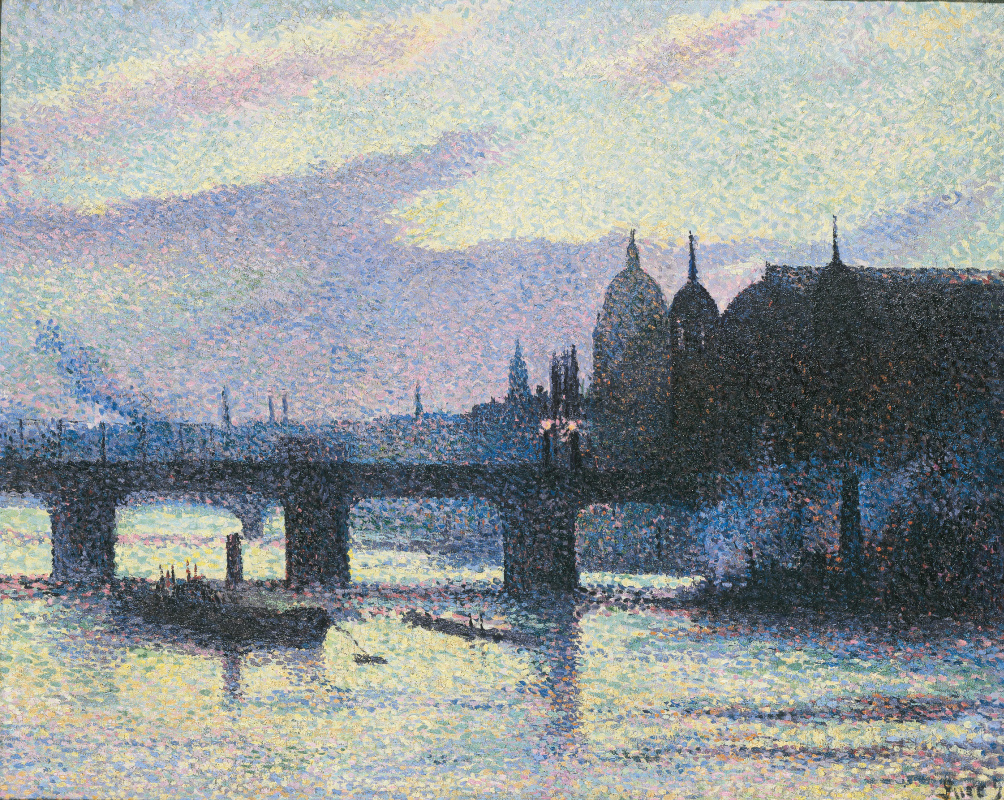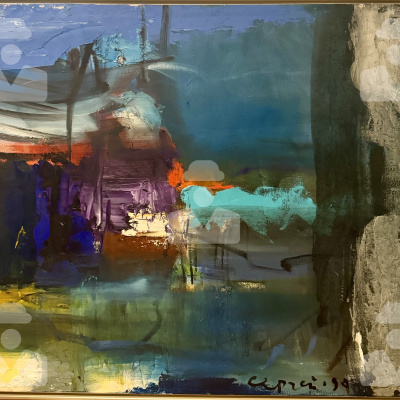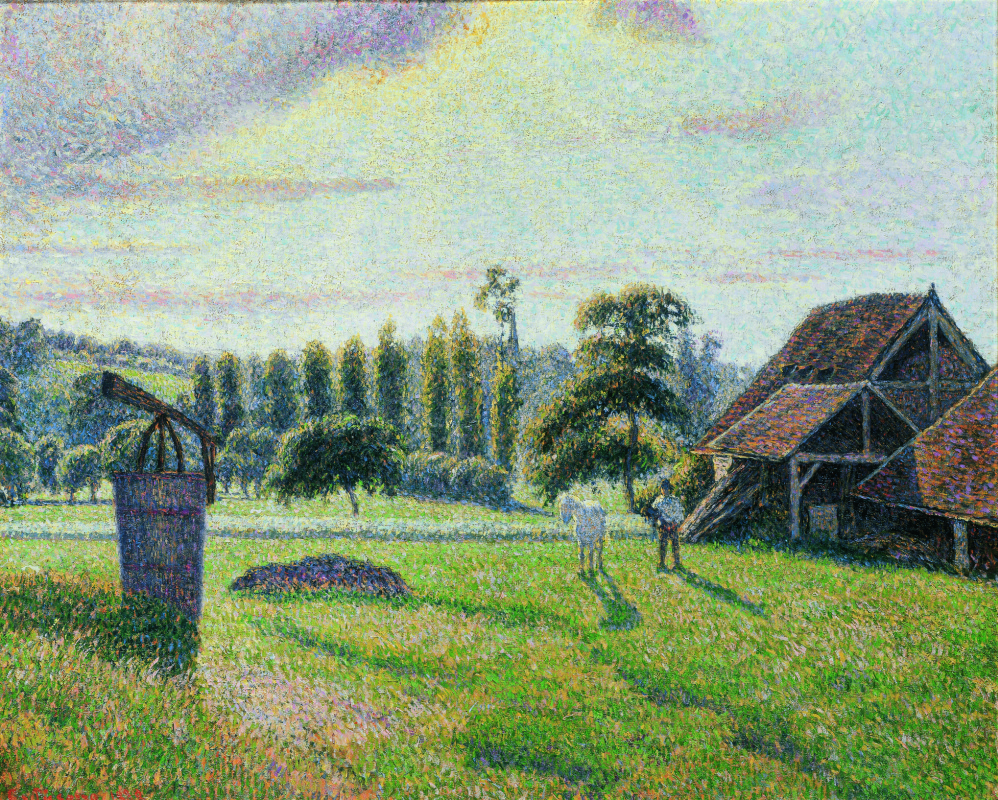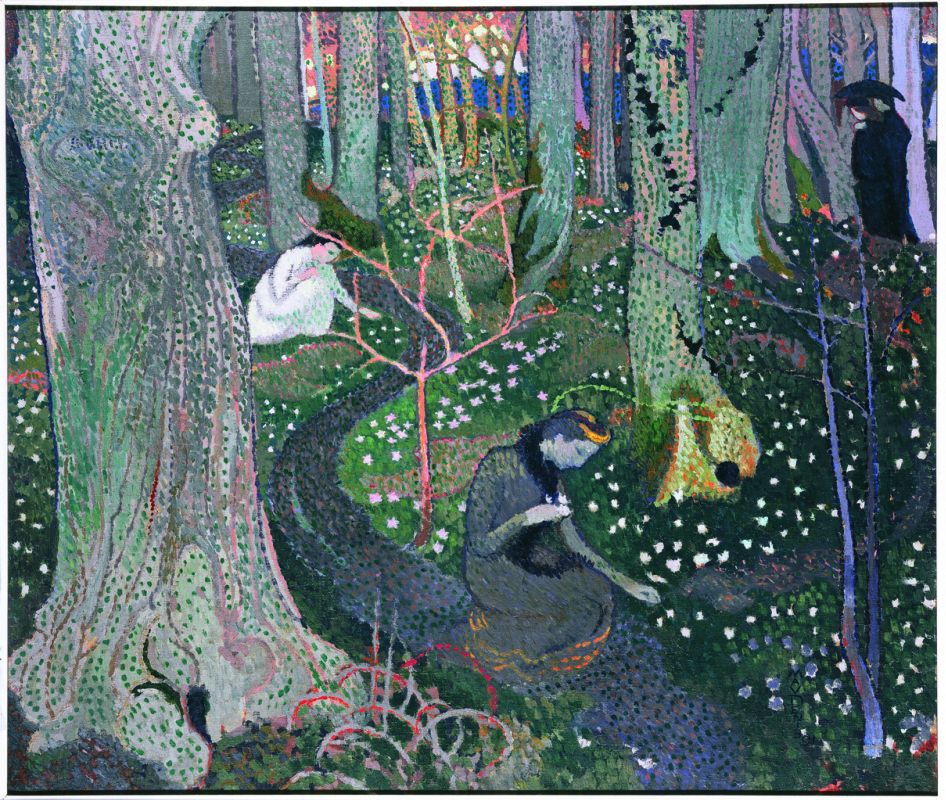
"the most significant artists of fin-de-siècle Paris".
Fin-de-siècle Paris was a time of sustained economic crisis and social problems. It is spurred the rise of radical left-wing groups and an attendant backlash of conservatism. Such events of the late 1890s exposed France’s polarization: bourgeois and bohemian, conservative and radical, Catholic and anticlerical, anti-republican and anarchist.
Mirroring the facets of an anxious, unsettled era, this period witnessed a spectrum of artistic movements, included Neo-Impressionists, Symbolists, and Nabis ("Prophets"). Their subject matter remained largely the same as that of their still-active Impressionist forebears: landscapes, the modern city, and leisure-time activities. However, these paintings were joined by introspective, fantastical visions, but the treatment of these familiar subjects shifted.
Left: Pierre Bonnard "The Little Laundry Girl" (La petite blanchisseuse), color lithograph (1896). Private collection
Most of the artists connected to Symbolism were averse to materialism and had lost faith in science, which had failed to alleviate the ills of modern society. Symbolist art embraced mythic narratives, religious thematics, and the macabre world of nightmares. This movement sought to elicit abstracted sensations and, through the subjective imagery depicted, to convey universal experience.
Sometimes Neo-Impressionist or Nabis works were identified with Symbolism, such as those by the Nabi Maurice Denis. Indeed, artists associated with this art did not always define themselves as such, among them Odilon Redon.
Left: Odilon Redon "Pegasus" (Pégase) (1895 — 1900). Private collection
According to the official website of the Guggenheim Museum Bilbao. Main illustration: Louis Anquentin
"Inside Bruant’s Mirliton" (1886−87), private collection






